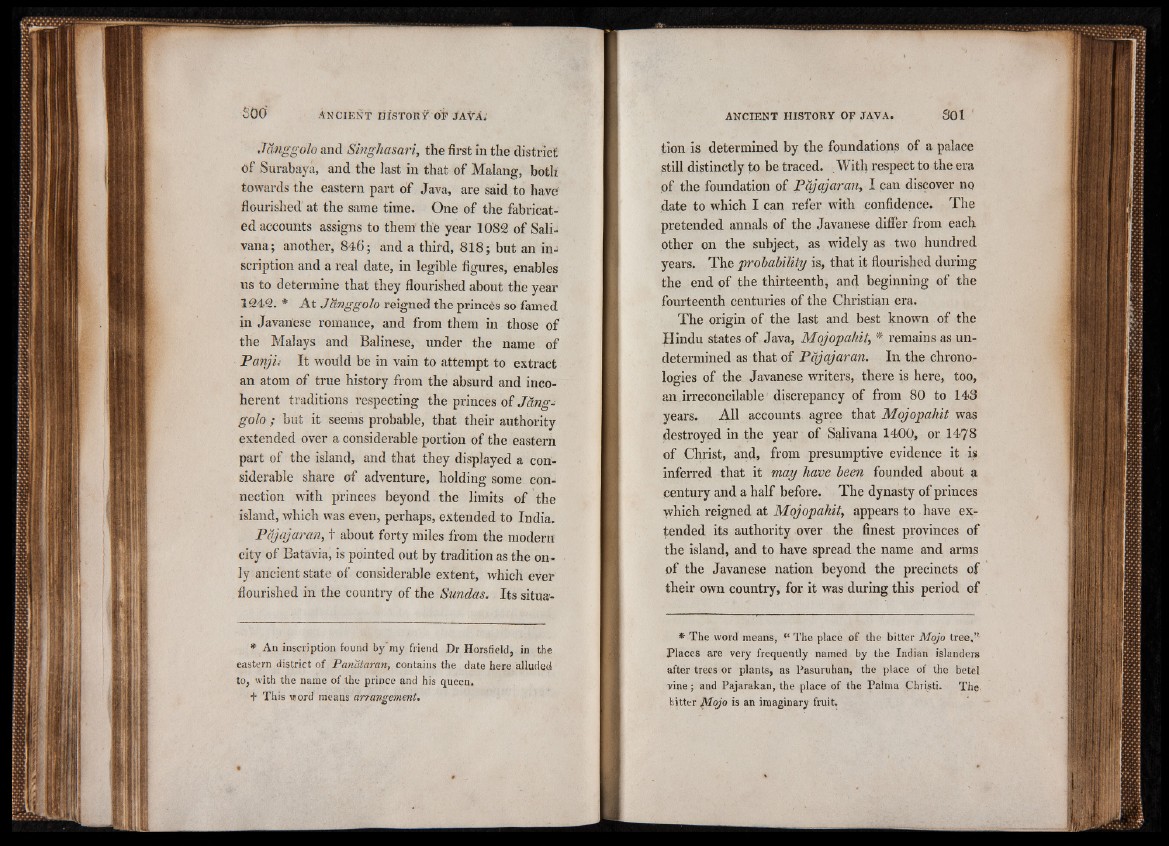
Janggolo and Singhasari, the first in the district
Of Surabaya, and the last in that of Malang, both
towards the eastern part of Java, are said to have
flourished at the same time. One of the fabricated
accounts assigns to them the year 1082 of Sali-
vana; another, 846; and a third, 818; but an inscription
and a real date, in legible figures, enables
us to determine that they flourished about the year
1242. # At Jdnggolo reigned the princes so famed
in Javanese romance, and from them in those of
the Malays and Balinese, under the name of
Panj'n It would be in vain to attempt to extract
an atom of true history from the absurd and incoherent
traditions respecting the princes of Jdnggolo
; but it seems probable, that their authority
extended over a considerable portion of the eastern
part of the island, and that they displayed a considerable
share of adventure, holding some connection
with princes beyond the limits of the
island, which was even, perhaps, extended to India.
Pdjajaran, t about forty miles from the modern
city of Batavia, is pointed out by tradition as the only
ancient state of considerable extent, which ever
flourished in the country of the Sundas,. Its situa-
* An inscription found by'my friend Dr Horsfield, in the
eastern district of Panataran, contains the date here alluded
to, with the name of the prince and his queen,
t This word means arrangement.
tion is determined by the foundations of a palace
still distinctly to be traced. With respect to the era
of the foundation of Pdjajaran, I can discover no
date to which I can refer with confidence. The
pretended annals of the Javanese differ from each
other on the subject, as widely as two hundred
years. The probability is, that it flourished during
the end of the thirteenth, and beginning of the
fourteenth centuries of the Christian era.
The origin of the last and best known of the
Hindu states of Java, Mojopahit, * remains as undetermined
as that of Pdjajaran. In the chronologies
of the Javanese writers, there is here, too,
an, irreconcilable discrepancy of from 80 to 143
years. All accounts agree that Mojopahit was
destroyed in the year of Salivana 1400, or 1478
of Christ, and, from presumptive evidence it is
inferred that it may have been founded about a
century and a half before. The dynasty of princes
which reigned at Mojopahit, appears to have extended
its authority over the finest provinces of
the island, and to have spread the name and arms
of the Javanese nation beyond the precincts of
their own country, for it was during this period of
* The word means, “ The place of the bitter Mojo tree.”
Places are very frequently named by the Indian islanders
after trees or plants, as Pasuruhan, the place of the betel
vine; and Pajarakan, the place of the Palma Christi. The
bitter Mojo is an imaginary fruit.